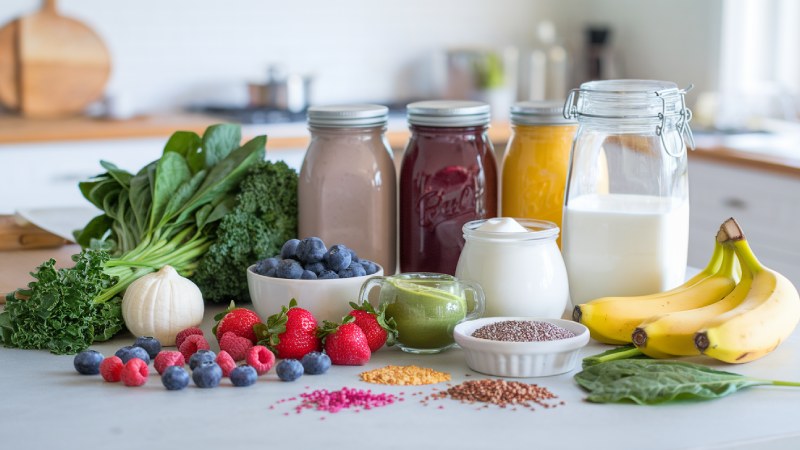Smoothies have become a popular choice for those looking to incorporate more nutrients into their diets. By focusing on a balanced mix of ingredients, you can transform a simple beverage into a powerhouse of health benefits. Here’s how to create smoothies that are not only delicious but also packed with essential nutrients.
Key Components for a Healthy Smoothie
- Protein: Adding protein sources like protein powder, Greek yogurt, or nut butter provides essential amino acids that help stabilize blood sugar levels and promote satiety.
- Fruits: Use fruits such as berries, mangoes, and bananas for natural sweetness, vitamins, and minerals. Keep an eye on the sugar content, especially in pre-made smoothies.
- Vegetables: Incorporate nutrient-dense vegetables like spinach, kale, and carrots. Greens are low in calories and high in vitamins, enhancing your overall nutrient intake.
- Liquid Base: Choose from dairy or plant-based milk, water, or fruit juice to blend your ingredients smoothly.
- Healthy Fats: Adding fats like avocado, flax seeds, or nut butter can enhance absorption of fat-soluble vitamins and keep you fuller longer.
- Complex Carbohydrates: Consider including ingredients like oats or sweet potatoes for sustained energy release.
Additional Tips and Ideas
- Greens: A handful of spinach or kale can boost your smoothie’s micronutrient content without overwhelming the flavor.
- Fiber: Fiber-rich ingredients like chia seeds can improve digestion and stabilize blood sugar levels.
- Superfood Boost: Add nutrient-dense superfoods such as spirulina, maca powder, or goji berries for extra health benefits.
- Spices and Herbs: Flavor your smoothies with ginger, cinnamon, or turmeric, which also have numerous health benefits.
- Unrefined Sweeteners: If needed, sweeten your smoothie naturally with agave, honey, or dates.
- Versatility: Don’t be afraid to experiment; smoothies are a great way to try new combinations.
- Hidden Veggies: Incorporate vegetables like cauliflower or cooked sweet potatoes for a creamy texture and increased nutrients.
- Cruciferous Vegetables: Adding cabbage or bok choy can provide anti-inflammatory benefits.
Example Recipes
- Berry Green Smoothie: Blend 1 cup of frozen mixed berries, a handful of spinach, 1 scoop of vanilla protein powder, ½ cup of vanilla Greek yogurt, 1 cup of liquid base (water or milk alternative), 1 tablespoon of ground flaxseed, and a few ice cubes.
- Nut Butter and Banana Smoothie: Blend 2 tablespoons of nut butter, 1 frozen banana, 1 scoop of vanilla or chocolate protein powder, ½ cup of vanilla Greek yogurt, 1 cup of liquid base, 1 tablespoon of ground flaxseed, and a few ice cubes.
- Creamy Kale Smoothie: Combine 1 cup coarsely chopped kale, 1½ cup frozen pineapple chunks, ½ cup plain Greek yogurt, ½ cup unsweetened almond milk, and 1 tsp honey. Blend until smooth and frothy.
Conclusion
By focusing on whole foods and incorporating a variety of nutrients, you can create smoothies that are both tasty and nourishing. With the right ingredients, smoothies can serve as a quick meal or snack, contributing significantly to your daily nutritional needs.
